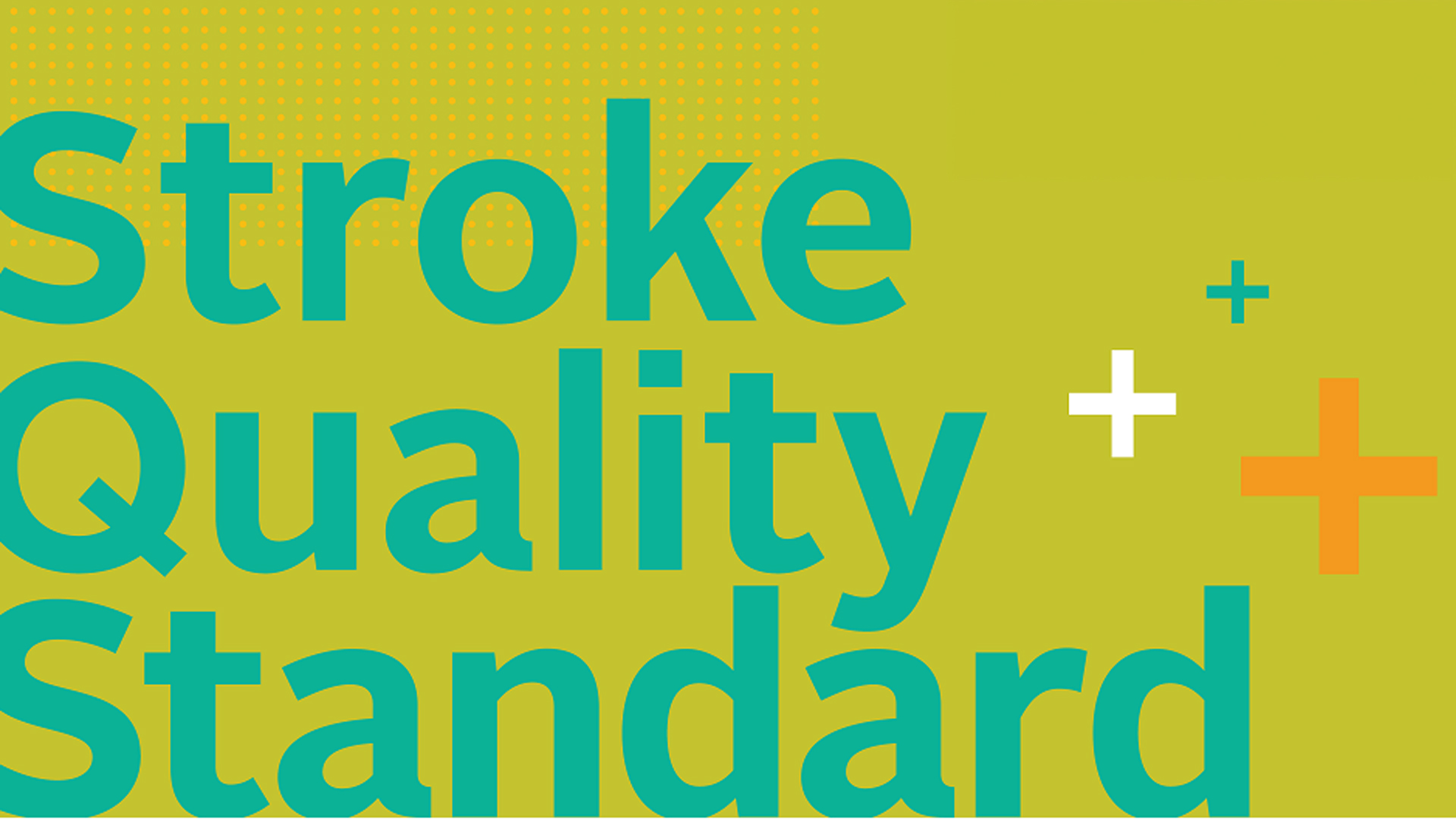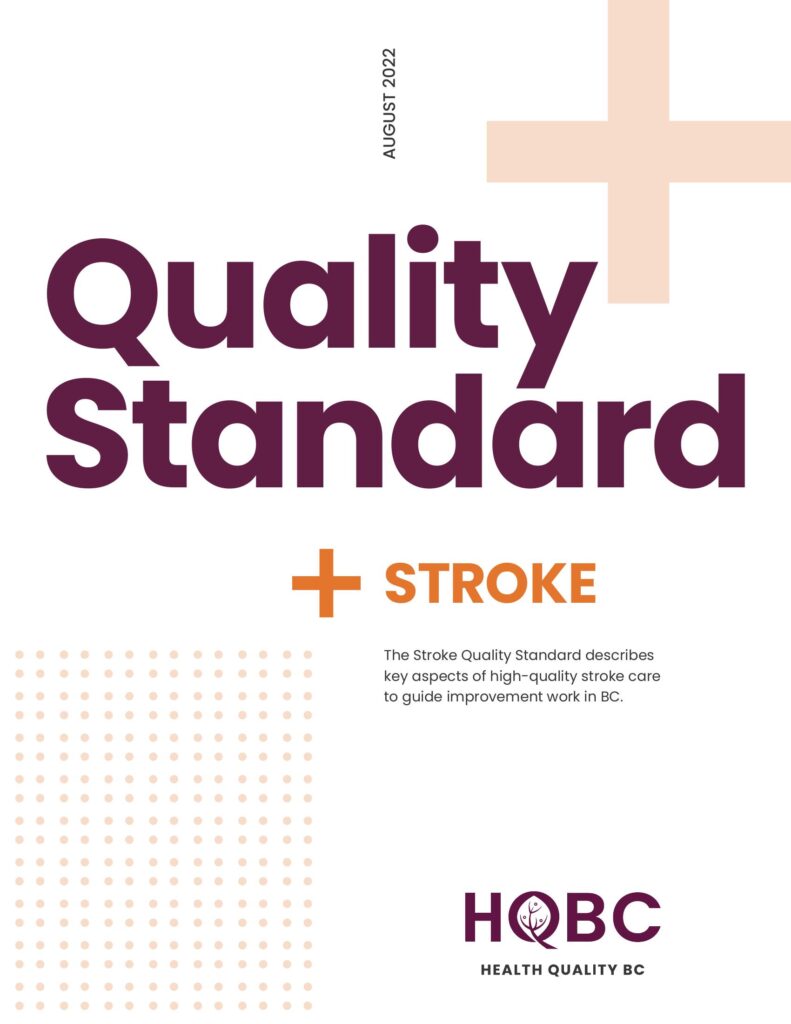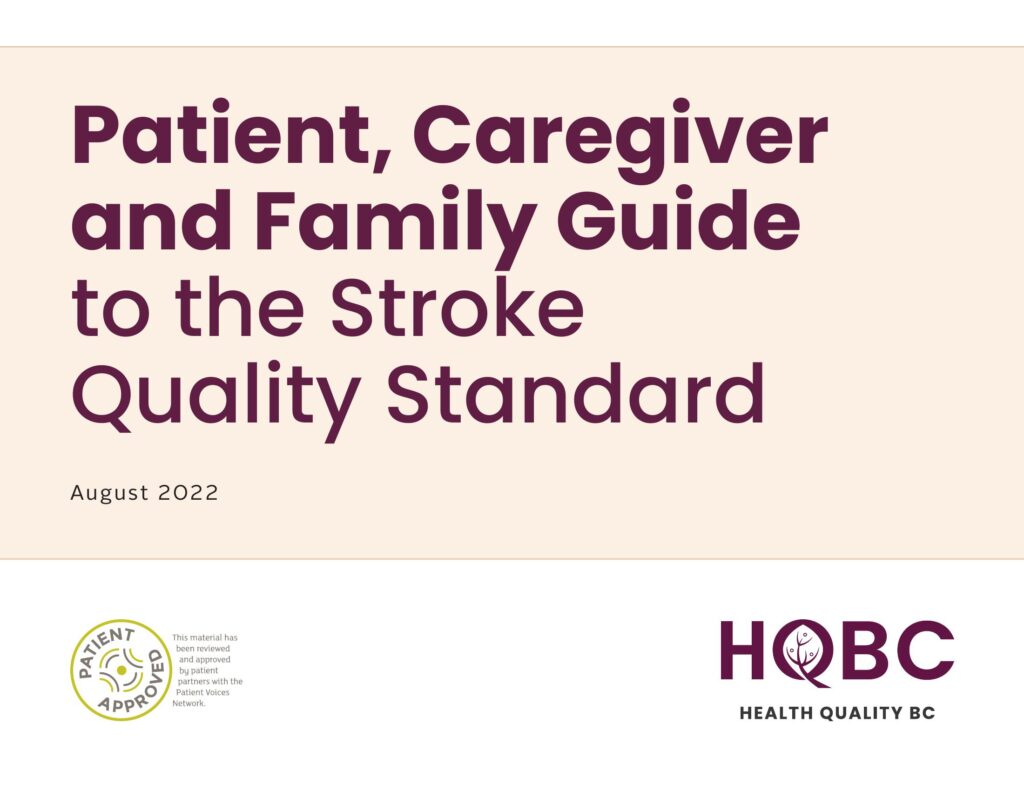The BC Health Quality Matrix is an excellent resource that presents a definition and common language for understanding quality through seven dimensions: respect, safety, accessibility, appropriateness, effectiveness, equity and efficiency.
But what does quality care mean for a specific health condition or journey? Certainly “best practice recommendations” and “clinical guidelines” highlight the current scientific evidence, principles for care and necessary infrastructure to treat specific conditions.
But where does truly person-centred quality come in? What should it look and feel like for the individual patient? How do organizations put those broad concepts of quality into practice and track their performance? And with so many moving parts, how does our health system know where time and attention are needed to continuously improve?
Enter: quality standards.
A quality standard is a set of concise statements and associated indicators that outline where improvement work can have the biggest impact on patients’ health and wellness. They focus on areas of the patient journey where the need for improving quality is the greatest.
In 2020, we began work to lead the development of quality standards for BC, the first of which focused on stroke care. In partnership with Stroke Services BC, health authority stroke leaders, BC Emergency Health Services, the First Nations Health Authority, UBC Research and patient partners, the project worked to combine evidence guidelines, best practices and the perspectives of point-of-care providers, patients and families.
“We wanted to improve the likelihood that those experiencing stroke in BC receive care that is evidence-informed and culturally safe, regardless of where they are,” explained our former Strategic Initiatives Leader, Ed Elkins, who led the project.
“Developing a common set of goals, along with clear, evidence-based measures to monitor progress towards them, should help to reduce unwarranted variation in the services and support offered across the province.” Unwarranted variation is key when it comes to quality standards. It refers to variation in care received that cannot be explained by the condition or the preference of the patient – it can only be explained by differences in health system performance. By reducing unwarranted variation, quality standards can help ensure that care provided is consistent regardless of where in the province it takes place.
Stroke Quality Standard
Patient, Caregiver and Family Guide to the Stroke Quality Standard
Patient Engagement – A Trio of Tactics
Appreciating that a person-centred standard was a key goal and that no two patients or journeys are the same, we recognized that a one-time-one-size-fits-all engagement strategy wouldn’t be appropriate.
Instead, we used three different engagement strategies to include diverse patient perspectives at various points of the project.
The first approach was to ensure patient partners with a personal connection to stroke care were members of project’s development committee. Patient Voices Network (PVN) patient partners Lesley and Art Erasmus as well as Bob Strain first joined in October 2020, participating at the IAP2 level of “collaborate.”
“Personally, surviving a stroke and working on the [development] committee, have been of special interest and meaning for me,” shared patient partner Bob Strain.
“I was one of three patient partners and each of us focused on the patient perspective. Ed went out of his way to assure everyone on the committee that the standard we were developing reflected this focus.”
As committee members, the patient partners were invited to speak about their own experiences, contribute to discussions and decisions, and review key documents and drafts. Bob was very impressed with the extent to which they were included.
“On every discussion, I was able to present my views, both positive and negative, about points under consideration. I was able to submit feedback both before and after every Zoom session. I know I was being listened to, judging from comments from other participants. I had a chance to receive more information about the project and its process than practically any other committee I’ve been on!”
The second approach, true to our values of collaboration and transparency, was to take the draft standard out for a four-week public review process, between April and May 2021. In total, 542 people shared their perspectives via an online survey. Their feedback helped to ensure the standard would be applicable across all regions of the province.
And our third approach took a critical look at who was, and was not, “at the table” during the public review. We recognized that very few Indigenous Peoples had participated. With equity as well as cultural safety and humility being critical parts of the standard, it was imperative to find a different way to connect with and learn from those voices.
We reached out to Cathy Almost, one of our Engagement Leaders, to plan a culturally safe engagement approach. Three Indigenous patient partners from PVN were agreed to participate in a review of the standard. We took care to send materials and clear instructions ahead of time, focusing on the sections related to patient experience and cultural safety, provided both digital and hard copies of the draft standard and then met for a two-hour Zoom meeting to discuss each statement in the standard.
Taking the Time to Do It Right
Good engagement isn’t always easy and it certainly isn’t always quick. But taking the time to thoughtfully listen and learn from patient partners can have rich payoffs for all involved.
“The most rewarding part of this engagement was being supported by a well-prepared leader who insisted that the patient voice be loud and clear. Organization was superb, with lots of preliminary work, and then follow-up checks being made on every salient point, even at the end of the work,” said Bob.
Engagement Outcomes & Impact
The patient partners on the development committee were heavily involved in advising the wording of the standard and really pushed for the use of non-abbreviated, plain language, so that the standard would be understandable to all. Coupled with the feedback received through the public review and Indigenous patient partner advisory group, we made several changes to the standard:
- Added content on systemic barriers to health for Indigenous Peoples in BC, specifically calling out racism, stereotyping, discrimination and geographical barriers.
- Updated the wording around “traditional medicine” to instead be more inclusive: “Natural healing and traditional and/or complementary medicine.”
- Brought in a knowledge translation expert to review the document for readability and ensure abbreviations were appropriately defined.
- Added a reminder for clinicians to check that their patients understand information and instructions.
- Added guidance that education materials should be available in a variety of languages.
- Designed the final documents to be aphasia friendly.
“Working alongside patient partners on this project helped all involved to stay grounded in what this work is intending to do: improve the care of those experiencing stroke. They ensured that the Stroke Quality Standard centres around the person experiencing stroke,” said Ed.
Initiative Outcomes & Impact
Together with our many collaborators, we were pleased to launch the Stroke Quality Standard and Patient Family and Caregiver Guide on September 7. Going forward, implementation, measurement and evaluation will be led by Stroke Services BC and we’ll turn our attention to developing the next quality standard, focusing on maternity care.
Reflections, Advice & Lessons Learned
When asked about advice for patient partners or others interested getting involved in a similar partnership, Ed said, “Look for a project that speaks to you, that you’re passionate about. Your experience and perspective can help change the way the system works for the better.”
As for advice for health care teams, Ed offers that, “Patient partners can be some of the greatest team members in your work. They have passion and interest in making the system better. Involve them authentically and be open to growing from their knowledge and experience.”
Bob’s reflections on the success of this engagement offers pearls for health care teams embarking on engagement work: the importance of thoughtful planning, kind and inclusive facilitation, documenting process and communicating progress and impact with patient partners.
“Successful patient engagement is about the opportunity to present my views and react to those of others on the committee, and still being able to enjoy what is happening during the intense moments. Engagement means knowing the project is meeting its goals after a lot of input. Engagement means that the upshot of all our work will mean patients in our system, and not just those who have had stroke, will be aware of the thoroughness of our deliberations, and the impact which will come from developing a well-thought-out document,” said Bob.




